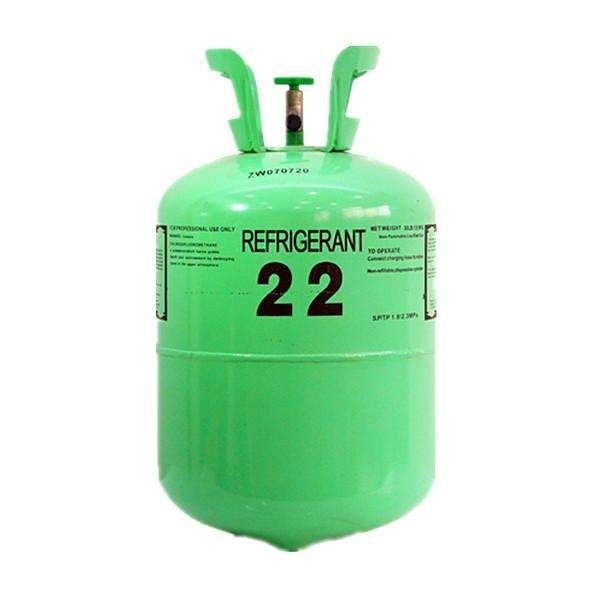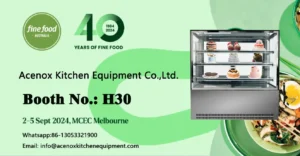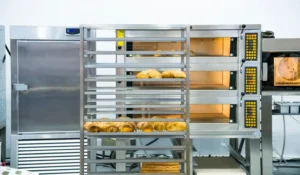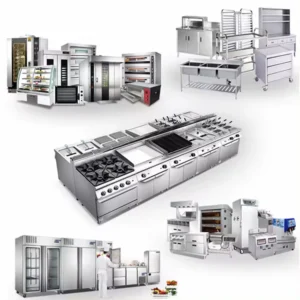
Introduction
Regarding commercial refrigeration, the refrigerant option determines the system’s capability to provide efficient and environmentally friendly operation with a favorable cost structure. In light of the growing interest in sustainability, the refrigeration industry is getting increasingly criticized by environmentalists, especially for the kind of refrigerants it involves.
The science behind refrigeration technology is also interesting, as refrigerants must be uniquely designed to absorb heat and carry it away from storing food. This process is necessary for different applications, including the beverage display in a convenience store and the chiller display used in the supermarket. This article will cover the issues about commercial refrigeration equipment that specifically tackles the refrigerants used, their environmental impact, and the change to eco-friendly alternatives.
What Is Commercial Refrigeration Equipment?

Even though we are talking mainly about commercial refrigeration equipment, this category includes many types of machines that have one thing in common: features of cooling or freezing. The equipment involves commercial display chillers, reach-in refrigerators, reach-in freezers, ice machine, refrigerated display case and all kinds of chest freezers, island freezers, etc.
What Refrigerant Is Used In Commercial Refrigeration Equipment?
The term refrigerants refers to substances used within refrigeration systems to absorb surrounding environment heat because the contents of the refrigeration unit become either cooled or frozen. The industry has experienced a shift in the kinds of refrigerants.
Firstly, let’s see these refrigerants’ impacts to enviroments:
R22 refrigerant has an ozone depletion potential of 0.055 and a global warming potential of 1700; R404a refrigerant has an ozone depletion potential of 0 and a global warming potential of 4540; R410A refrigerant has an ozone depletion potential of 0 and a global warming potential of 2340; R134a refrigerant has an ozone depletion potential of 0 and a global warming potential of 1600; R290 refrigerant has an ozone depletion potential of 0 and a global warming potential of 3.
● R-22 (Chlorodifluoromethane)

R-22 is one of the most popular refrigerants that have harbored commercial refrigeration for many years thanks to its special properties. On the other hand, its ODP and GWP profiles have been appraised as too big for the post manufacturers, and because of this, it has had to be phased out in most grade countries. Strict consumption limits are enforced, and researchers are currently studying the feasibility of replacing them in existing systems.
● R-404A
R-404A is a mixture of types of refrigerants that become the main components in commercial worlds, especially in freezers that serve low temperatures. It is the show’s star for displaying egg-shaped products in the cold because of its high efficiency and productivity. Conversely, the R-404A gas is a powerful greenhouse gas, also on the list of gases that cause the climatic change that the citizens and the world leaders seek to stop and live, which has urged the researchers on new eco-friendly alternatives.
Disadvanatges: The refrigeration technology of R404A type can lead to excessively high discharge temperature of the compressor. When the temperature during compressor operation exceeds normal values, it not only increases compressor power consumption but also causes carbonization of the lubricating oil, resulting in poor performance and affecting the normal working of the compressor. Although a high GWP value does not directly damage the ozone layer, greenhouse gases will remain in the atmosphere, absorbing heat, thus causing the greenhouse effect. Currently, Europe is gradually phasing out R22 and R404A refrigerants because the ODP and GWP values of these two refrigerants exceed standards, causing extremely adverse effects on the environment.
● R-134a (Tetrafluoroethane)
Such GHGs as R-134a are applied in refrigerators at various facilities, including automobiles. R-22 was eliminated from many applications and replaced by this ODP-free option. Nonetheless, the R-134a has a high GWP rating, which is a disapproval of the admired eco-friendly technologies.
● R-290 (Propane)
R-290 become a rapidly expanding hydrocarbon refrigerant voted as an eco-friendly alternative. The refrigerant R-290 is recognized to be outstanding in terms of its ODPI and GWPI, and R-290 is consequently regarded as one of the best green refrigeration systems available. Its energy efficiency and suitability for commercial refrigeration applications, from display cases to freezers, make it a great pick for retailers using these machines.
Disadvanatges: R290 has flammable and explosive characteristics, and its filling quantity is restricted. Its safety level is A3. When using R290 refrigerant, vacuuming is required, and open flames are prohibited because it can form explosive mixtures when mixed with air (oxygen). There is a danger of combustion and explosion when exposed to heat sources and open flames.
● R-600a (Isobutane)
Similar to R-290, which is a hydrocarbon with outstanding ecological features like low GWP and ODP values. The greater fraction of it is utilized in smaller refrigeration systems and has the reputation of being both efficient and minimally damaging to its environment. R-600a, due to its environmentally friendly nature and added benefits, is now the first choice of refrigerant for new commercial refrigeration units.
The explosion limit volume of R600a refrigerant is 1.9% to 8.4%. Its safety level is A3. It can form explosive mixtures when mixed with air. There is a danger of combustion and explosion when exposed to heat sources and open flames. It reacts violently with oxidants.
Disadvanatges: R600a refrigerant is not suitable for air-cooled refrigerators. It requires high maintenance. When the R600a refrigerant content in the refrigeration system is insufficient, it may cause excessive pressure, abnormal machine noise, and shorten the compressor’s lifespan.
Which Refrigerant Is Best For Cooling?
For decades, R-22 and R-404A were long considered to be the refrigerants of choice because of their high cooling efficiencies, but this has changed in the last decade as hydrocarbons such as R-290 have become widely available. Green refrigerator gases are quickly winning the reputation as they combine the good of overall performance and sustainability, which makes them an increasingly popular eco-friendly option in commercial refrigeration.
Refrigerant For Commercial Refrigerators & Freezers?

R-134a, R-600a, and R290 are among the widespread refrigerants in refrigerators, and R-404A and R-290 are commonly applied in freezers due to their effectiveness in rejecting heat in lower temperature status. Contrary to this trend, almost all refrigerators and freezers now applaud the usage of R-290 and R-600a since their actions are very eco-friendly.
Which Refrigerant Is Suggested?
As is already known, refrigerants of the hydrocarbon type emitted in traditional commercial refrigeration present a major environmental problem that demands a switch to R-290 and R-600a. The refrigerants of such nature do not leave much of an environmental footprint; conversely, they provide amazing performance and energy efficiency. Companies and operators who win the competition give green technologies a chance to be used both to comply with regulations and contribute to the preservation of the environment.
Matching Refrigerants with Compressor Models
One important thing is whether the refrigerant is compatible with the chosen compressor model. Various models, e.g., Embraco, every intelligent model, use some exact compounds to bring the highest efficiency and reliability. For instance, one of Embraco’s compressors was modified for R-290 use, so this refrigerant’s specific characteristics can boost power and energy efficiency. It is very important to select the refrigerant model’s compression and the functionality needed for the proper operation.
Conclusion
Moving to decisively ecological refrigerants for commercial refrigeration equipment is an essential component of regulations and a bold step towards sustainability. As for the F-Gas Regulation, which is gradually excluding refrigerants with high global warming potential like R-22 and R-404A, these are now moving towards alternatives like R-290 and R-600a. These amendments represent a higher priority in environmental protection and energy efficiency. Technological innovation will introduce safer and more efficient refrigerants into the market. This choice will be guided by the delicate balancing act wherein efficient cooling will go alongside the responsibility towards the planet we are entrusted with.






